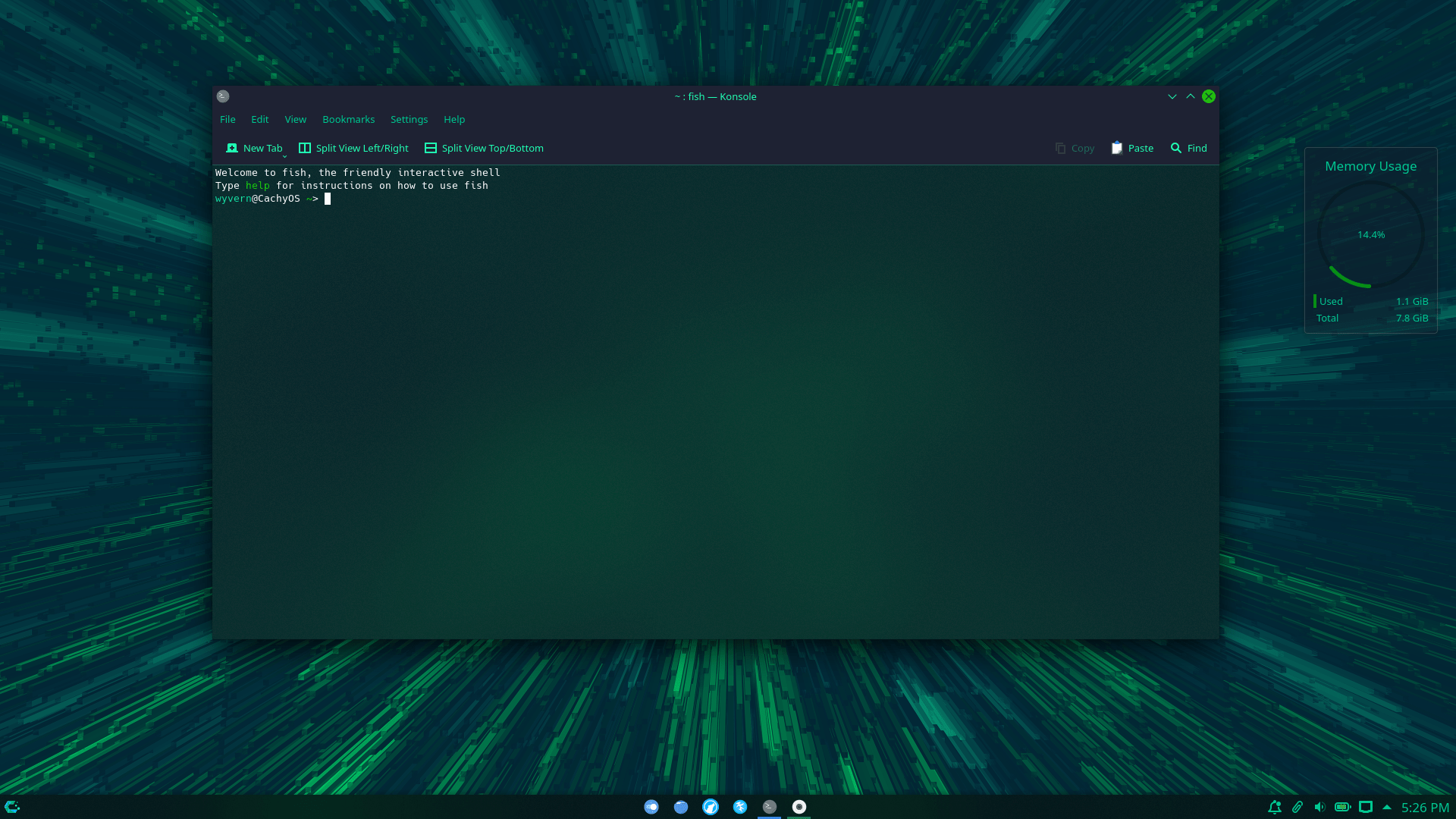CachyOS is a derivative of Arch Linux with some promising approaches that set the distribution apart from the mass of free operating systems. With an adapted desktop based on KDE Plasma, as well as optimized software packages and settings, the operating system should stand for particularly high performance.
CachyOS wants to go its own way
Linux developer Ferdinand Thommes, who is also well known among ComputerBase readers, put CachyOS in the spotlight for the first time and published the Linux distribution on his website. linuxnews.de presented and witnessed quite promising approaches. In fact, CachyOS goes its own way and stands out from the many Arch derivatives in the Linux cosmos.
Special features of the distribution, which reaches the system either via the well-known Calamares graphical installation routine or the CLI installer, include optimized software packages which, on the correct architecture (“x86-64-v3”), give as a result in a performance gain of up to 10 percent it should lead as well as partially hardened system kernels, which can be activated via the kernel manager.
performance is paramount
The open source project itself names the following unique selling points on its official website:
- CachyOS is an Arch Linux-based distribution that offers easy installation, various customization options to suit each user, and special optimizations to improve performance while remaining simple.
- We provide an optimized repository with march=x86-64-v3 support that comes with a noticeable performance boost. It depends on your CPU if it supports it, but you don’t need to worry about that – the installer will detect the correct gear and adjust to your system.
- We also provide several custom kernels optimized with various schedulers, which are maintained by me and will also be maintained soon by sir_lujan.
- These kernels will also include on-the-fly optimization, all of them already compiled and available in the repository, as well as LLVM-LTO support.
CachyOS Highlights
CachyOS stands out visually
In addition to KDE Plasma, CachyOS offers the Gnome, Xfce, LXQt, and CuteFish desktop environments, as well as the Openbox, i3, and, for example, Wayfire window managers. Visually, various themes and icons should ensure a self-contained look and a consistent user interface.
Even resource-saving window managers like open box Y i3 they come with custom-made themes and therefore offer a lot of “eye candy”. The entire appearance of the distribution also automatically adapts to the light and dark mode of the respective desktop user interface.

An internal navigator is on board
Another unique selling point of CachyOS is the internal browser, which is a fork optimized for data protection and privacy. LibreWolf basically based on Mozilla Firefox. Cachy Browser is compiled “out of the box” with several security related flags and offers numerous out of the box extensions that are specifically targeted at this area.
Software packages are optionally managed through the familiar Arch Linux package manager pac man and Octopi and Pamac GUI or command line options installed and maintained up to date.
As is typical of an Arch derivative, the many PKGBUILD scripts in the Arch user repository (AURO) ready to install.
Just try CachyOS
Users who want to test CachyOS can use the AMD64-optimized 2.4 GB system image CachyOS with KDE Plasma (ISO) via file server SOURCEForge Download and write to a USB storage medium using an appropriate program such as Rufus.
More information is provided by the extensive Wiki Cachy OSthat in particular also in the numerous Adjustments and optimizations of the operating system.

Introvert. Beer guru. Communicator. Travel fanatic. Web advocate. Certified alcohol geek. Tv buff. Subtly charming internet aficionado.

